Showing 221–230 of 261 results
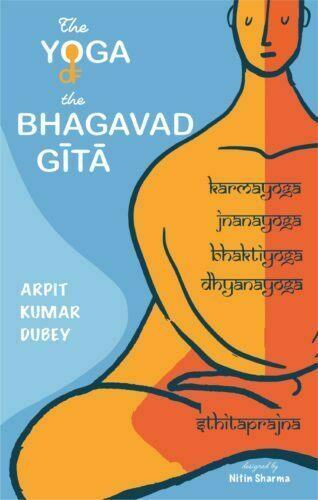
It vividly and graphically presents the key concepts of the Bhagavadgita while majorly discussing the concepts like atman, Paramatman, jagat, karma-yoga, jnana-yoga, bhakti-yoga, dhyana-yoga, sthitaprajna, sadhakas’ challenges and the ways out.
This volume covers all the aspects of Yoga and self-management discussed in the Bhagavadgita –– a comprehensive text of personal and professional life management and adhyatma-sadhana (spiritual upgradation). What makes the book special is its dialogue format between a guru and his disciple as exactly what we witness in the Bhagavadgita as between Sri Krsna and Arjuna.
It vividly and graphically presents the key concepts of the Bhagavadgita while majorly discussing the concepts like karma-yoga, jnana-yoga, bhakti-yoga, dhyana-yoga, sthitaprajna, and seven keys of self upgradation, which leads towards Health, Happiness and Harmony, challenges and the ways out.
This book will help in the making broader understanding of the concepts and philosophy of the Bhagavadgita, which transcends time and space, to register with the new generation readers and thereby emulate and practise the varied forms of Yoga.

This volume extensively deals with the concept of false cognition, or illusion, and analyses how the Samkhya-Yoga, Buddhist, Nyaya, Mimamsa and Vedanta schools of thought have criticized their opponents to establish their own view from the metaphysical and epistemological standpoints on illusion, along with many more minor theories.
Every school of Indian philosophy has prescribed its own ways to obliterate human sufferings in the best possible manner. More or less each of them has pointed out that the root cause of sufferings is false cognition of human being about the world and its objects. Only true cognition can eliminate the false one and like the destruction of a series in a chain, the sufferings will be automatically demolished at a point of time. Hence it is necessary to know the nature as well as the characteristics of false cognition.
The term illusion is used to denote false cognition according to Indian philosophy. So it may or may not have similarities with the views of Western thought. Each major school of Indian philosophy has analysed the theory of illusion from its metaphysical as well as epistemological standpoint. As a result, major theories Samkhya-Yoga, Buddhist, Nyaya, Mimamsa and Vedanta regarding illusion (popularly known as Khyativada) and many more minor theories have originated.
This volume thus extensively analyses how these schools have criticized their opponents standpoint to establish their own view, making it an interesting reading for everyone, be it a general reader, a student or a scholar in a simple and easy to understand format and language.
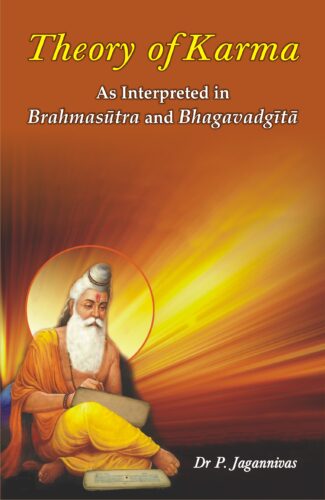
This book, which highlights and engages one to the theory of karma that is in vogue from the Vedic times and reinforced by the Brahmasūtra and the Bhagavadgītā, talks about one’s karma-phala and supplies enough material on karma-adhikāratva, jīva-kartr̥tva and the divine intervention.
Creation is a process, where the potential insentient matter (prakr̥ti) gets manifested into the gross form, to embody during the sr̥ṣṭi, each of the sentient entities called the ātmas with the suitable body either of deva, manuṣya, jaṅgama or of sthāvara. This glorious activity is orchestrated by the one and only Omnipresent, Omnipotent and Omniscient Reality called Brahman. But one question remains still an enigma, as to why a particular sentient entity gets a specified body and through whose direction that decision arrives? The ancient Vedāntic knowledge reinforced by the Brahmasūtra and the Bhagavadgītā establishes that it is, purely and solidly, the result (karma-phala) of earlier actions (karmas) of each one of the sentient entities. This is a strong and formidable solution to the unanswered questions like why does, one child being blessed to be born in either rich or healthy and sāttvic family and another child being consigned to be born in a family living in poor conditions or unhealthy tāmasic environment.
This book would engage the readers to think on those lines by supplying enough material on karma-adhikāratva, jīva-kartr̥tva and Divine intervention.
Thinker, Thought and Knowledge critically and analytically reasons that some of the philosophical expositions like “thought has created the thinker” and “higher-order thoughts are themselves conscious” hinder us from explaining our sense of unity of consciousness. This book presents and elucidates some observations — thought cannot create thinker; along with thinker and thought, thinking too is quintessential for individual experience to take place; thinker, thinking and thought are fundamentally one in self-consciousness; thought becomes the object of self-consciousness; and the modern science attempts to undermine the principle of causation — from the East—West perspective, and registers its disproval with the philosophical views of scholars like J. Krishnamurti and a few other modern philosophers. Coming to the knowledge aspect, the volume delineates the relative existence and knowledge dealing with the absolute reality, and discusses it on the basis of Advaita Vedanta and the Yogacara Vijiianavada of the Buddhist philosophy along with Immanuel Kant’s theory of knowledge. The researcher’s approach employed in this volume should help the students of philosophy and other discerning readers take an analytical and critical positioning towards many a philosophical problem that they come across.
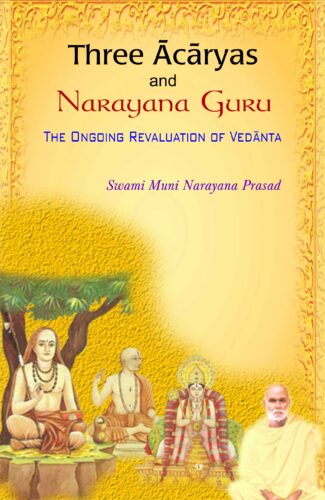
The book speaks about the philosophy of Narayana Guru as guidance to study and compare the philosophies of the acaryas, particularly those of Shankara, Ramanuja and Madhva. It also explores the concepts of avidya and maya, atomicity of the self, consciousness and the self, tat tvam asi, karma and reincarnation and the ultimate liberation.
Shankara, Ramanuja and Madhva are considered the three acaryas of South India who commented on the three basic texts of Vedanta, that is, the Upanishads, the Brahma-Sutras and the Bhagavad-Gita, and therefrom originated the three major schools within the Vedanta fold — Advaita, Vishishtha advaita and Dvaita respectively. This volume is concerned with the philosophy of the famous saint-teacher Narayana Guru and his perspectives on the philosophies of the three acaryas.
The book uses the philosophy of Narayana Guru as the guide to study and compare the philosophies of the acaryas. It begins with the life sketches of the three acaryas and discusses their philosophies, especially the various specific viewpoints they maintained and the points on which they disagreed. It explores the ideas of the acaryas on avidya and maya, atomicity of the self, consciousness and the self, tat tvam asi, karma and reincarnation and the ultimate liberation. It also scrutinises their use of terms like that of atha which literally means now then. It examines the perception of Narayana Guru vis-a-vis the particular philosophical positions in a unified manner. It also contains the full text, transliteration and translation of the original Vedanta-Sutras of Narayana Guru.
The volume will interest students and scholars who are engaged in advanced studies on the philosophy of Vedanta, and persons keen on acquainting themselves with the philosophy of Narayana Guru.
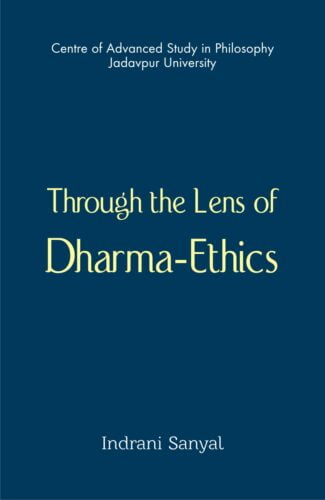
This volume primarily concerns itself with the elaboration and analysis of the Vaidika ethics as one of the exemplars of DharmaEthics, to answer the basic question as to why should one be moral. A sustained analysis has been carried out to explain the sense of transcendence of the empirically existent, in terms of abhyudaya, mukti for which this DharmaEthics is a supportive ladder.
Notwithstanding the profound and vast dimension of the concept of Dharma as such, Through the Lens of Dharma-Ethics, the author has endeavoured to put forward some of the metaphysical affirmations on which the feasibility of Dharma-Ethics as a discipline reposes. This volume primarily concerns itself with the elaboration and analysis of the Vaidika ethics as one of the exemplars of Dharma-Ethics, to answer the basic question as to why should one be moral.
An attempt has been made in this volume to rearrange and reformulate the answer by discussing the concepts of Dharma and its allied concepts, different kinds of karmas prescribed for the individuals, the fourfold scheme of purushartha, psychology of human volition, roles of different psychological traits, nature of motivational force conveyed through the imperative statements and many other relevant issues.
A sustained analysis has been carried out to explain the sense of transcendence of the empirically existent, in terms of abhyudaya, mukti for which this Dharma-Ethics is a supportive ladder. If there is hope for man, why should there not be hope for mankind? possibility of this sort has also been addressed. The human-centric Dharma-Ethics has been deciphered as a description and also as a prescription for the embodied humans with their various sort of indebtedness, about how they live and how they ought to live in the truth of Dharma.
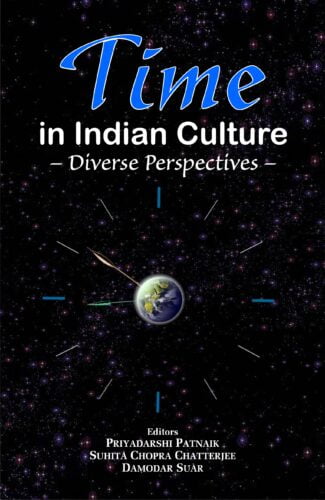
The volume is a comprehensive collection of papers dealing with the philosophical, religious/spiritual, and linguistic aspects of time, and time as understood in Indian art, music and other aspects of culture.
The concept of time has been variously interpreted and debated in the Indian tradition since ancient times. It is referred to by the word kala which has many meanings like time personified, time as death, time as a cycle and so on, and other words like samaya, vela, kshana as well, which refer to various aspects of time.
The volume is a comprehensive collection of papers dealing with the philosophical, religious/spiritual and linguistic aspects of time, and time as understood in Indian art, music and other aspects of culture. Scholars explore themes such as the notion of beginning of time in cosmology, theology and philosophy, time as interpreted by the Indian philosophical systems, use of the notion of time by Bhartrihari, and concepts of time as interpreted by Indian poets. They examine time as experienced in the seasonal, ritual cycles of Indian social, cultural and physical life, use of tala and laya in north Indian music, interpretation of time in the Ragamala painting tradition, perception of time in Indian architecture, and in Indian popular culture.
Towards a New Age of Nonviolence is a compilation of scholarly articles on Gandhi – his philosophy of nonviolence (ahimsa) and nonviolent action (satyagraha) – are the themes encompassing the volume. In a materialistic world of today, people hold guns and grudges, and for the slightest glitch, they pronounce wars that do not end. The fearful consequence of this would lead to human extinction very soon. In such a detrimental and precarious scenario, the only way out is to embrace the Gandhian way of living.
The book comprises 14 articles on Gandhi and his values, its relevance to industrial age, views on nonviolence, economics of gram swaraj, significance of peace and tolerance in an era of explosive technology and his spiritual and ethical doctrine in the context of current global conflicts. The book is sure, a must read for everyone who wants to see a better world.

This book offers a novel interpretation of conflict deriving from basic principles for dealing with fundamental differences. It suggests a qualitatively new technique that can bypass historical impasses and usher in a stable peace.
Truth has been a contested concept between men of religion, philosophers and ideologues, generating conflicting social-economic-political paradigms. The Towering Wave, a literary work by philosopher B.K Mallik first published in 1953, explores these clashing alternatives while seeking answers to problems of conflict and existential uncertainty. Mallik lived through two world wars in Oxford which had raised uncomfortable questions about the assumptions underlying European self-understanding and led to new attempts to configure a post-colonial international order. These form the background to the questions raised in this book.
Mallik offers a novel interpretation of conflict deriving from basic principles for dealing with fundamental differences. He suggests a qualitatively new technique that can bypass historical impasses and usher in a stable peace.

This English version of Vicaracandrodaya elucidates the basic concepts of Advaita Vedanta as a dialogue between a guru and his disciple. A true knowledge seeker who studies this text under a brahmanistha guru will get to know the secrete knowledge of Vedanta. Also, it is a ready reference to the basic concepts in Pancadasi of Vidyaranya and Vicarasagara of Niscaladasa.
A prakarana in old Hindi (one of the regional mixed dialects), Vicaracandrodaya elucidates the basic concepts of Advaita Vedanta in the form of questions and answers. Pandit Pitambar, the author of the text, presents this work as a dialogue between a guru and his disciple. This book is an English translation of Vicaracandrodaya, by S. Bhuvaneshwari. It is spread across 249 questions and their answers, and takes the reader into the essence of the entire Vedantashastra. It also has a Laghu-vedanta-kosha explaining the basic Vedantic terms and a chapter as index providing quick reference to the basic concepts of Advaita Vedanta.
The author enunciates that a true knowledge seeker who studies this text under a brahmanishtha guru will get to know the secrete knowledge of Vedanta. And this knowledge will dispel darkness from his mind as the rising moon dispels darkness from the world. However, he insists that it should be studied from a guru with shraddha as Vedanta cannot be grasped without the guidance of an enlightened teacher. Also, this book serves as a ready reference to the basic concepts as discussed in Pancadashi of Vidyaranya and Vicarasagara of Nishcaladasa.
This volume is both a guide to the beginners in Vedanta and a text for nididhyasana. It will benefit all the people who dwell in the domain of Vedanta.
| There are no products |